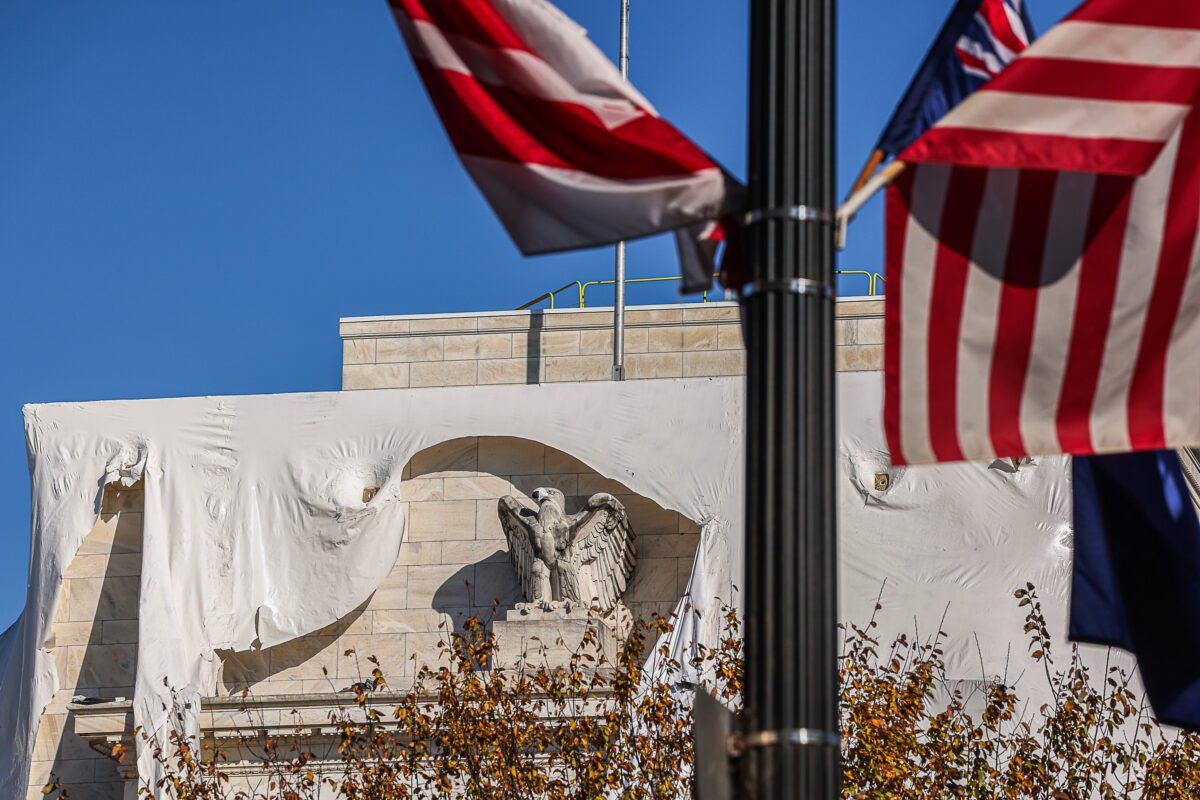Wie erwartet läßt die US-Notenbank Fed die Zinsen unverändert bei 5,25% bis 5,50% nach den zuletzt hohen Inflations-Daten.
Hier die wichtigsten Aussagen aus dem Statement der US-Notenbank in Headlines:
– kein Fortschritt auf dem Weg, die Inflation auf 2% zu bringen:
„In recent months, there has been a lack of further progress toward the Committee’s 2 percent inflation objective.“
Und:
„THE FED DOES NOT EXPECT IT WILL BE APPROPRIATE TO CUT RATES UNTIL IT HAS GAINED GREATER CONFIDENCE INFLATION IS MOVING SUSTAINABLY TOWARD 2%“.
– Wirtschaft solide, Arbeitsmarkt stark, Arbeislosigkeit bleibt niedrig („ECONOMIC ACTIVITY CONTINUES TO EXPAND AT SOLID PACE, JOB GAINS HAVE REMAINED STRONG, UNEMPLOYMENT RATE HAS REMAINED LOW“).
– Fed reduziert das quantitative Tigthening: FED CUTS TREASURY RUNOFF CAP TO $25B, KEEPS MBS CAP AT $35B
„Beginning in June, the Committee will slow the pace of decline of its securities holdings by reducing the monthly redemption cap on Treasury securities from $60 billion to $25 billion. The Committee will maintain the monthly redemption cap on agency debt and agency mortgage‑backed securities at $35 billion and will reinvest any principal payments in excess of this cap into Treasury securities“.
Das Statement der Fed im Wortlaut:
Recent indicators suggest that economic activity has continued to expand at a solid pace. Job gains have remained strong, and the unemployment rate has remained low. Inflation has eased over the past year but remains elevated. In recent months, there has been a lack of further progress toward the Committee’s 2 percent inflation objective.
The Committee seeks to achieve maximum employment and inflation at the rate of 2 percent over the longer run. The Committee judges that the risks to achieving its employment and inflation goals have moved toward better balance over the past year. The economic outlook is uncertain, and the Committee remains highly attentive to inflation risks.
In support of its goals, the Committee decided to maintain the target range for the federal funds rate at 5-1/4 to 5-1/2 percent. In considering any adjustments to the target range for the federal funds rate, the Committee will carefully assess incoming data, the evolving outlook, and the balance of risks. The Committee does not expect it will be appropriate to reduce the target range until it has gained greater confidence that inflation is moving sustainably toward 2 percent. In addition, the Committee will continue reducing its holdings of Treasury securities and agency debt and agency mortgage‑backed securities. Beginning in June, the Committee will slow the pace of decline of its securities holdings by reducing the monthly redemption cap on Treasury securities from $60 billion to $25 billion. The Committee will maintain the monthly redemption cap on agency debt and agency mortgage‑backed securities at $35 billion and will reinvest any principal payments in excess of this cap into Treasury securities. The Committee is strongly committed to returning inflation to its 2 percent objective.
In assessing the appropriate stance of monetary policy, the Committee will continue to monitor the implications of incoming information for the economic outlook. The Committee would be prepared to adjust the stance of monetary policy as appropriate if risks emerge that could impede the attainment of the Committee’s goals. The Committee’s assessments will take into account a wide range of information, including readings on labor market conditions, inflation pressures and inflation expectations, and financial and international developments.
Voting for the monetary policy action were Jerome H. Powell, Chair; John C. Williams, Vice Chair; Thomas I. Barkin; Michael S. Barr; Raphael W. Bostic; Michelle W. Bowman; Lisa D. Cook; Mary C. Daly; Philip N. Jefferson; Adriana D. Kugler; Loretta J. Mester; and Christopher J. Waller.
Kommentare lesen und schreiben, hier klicken














Die Bilanz ist Wahnsinn. Eigentlich sollte diese gigantische Bilanz- nach der Finanzkrise- wieder auf das Vorkrisenniveau vom Sommer 07 reduziert werden…. ( 750 Milliarden US Dollar )
Heute stehen wir beim Zehnfachen, obwohl die Krise längst vorbei ist…
Roland Leuschel sagte damals schon -bei Raimund Brichta in der NTV Telebörse- Wer das glaubt- der ist naiv. Er brachte das Beispiel mit der ausgedrückten Tube Zahnpasta….
Die FED kommt aus dem Dilemma nicht mehr raus…Sie hat die Märkte abhängig gemacht von Liquidität….und wie ein Drogenabhängiger schreit die Wallstreet nach immer mehr Liquidität..
Wir sollten uns nicht täuschen lassen, bei der nächsten Krise liegt die Bilanz nicht bei den 7,5 Billionen- wie aktuell – sondern sofort bei mindestens 15 Billionen….
Dann wird wieder die Druckerpresse angeworfen…und Geld gedruckt als gäb’s kein Morgen…
Aus der Nummer kommt die FED nicht mehr raus…
Die Ursache dieser 7,5 Billionen liegt allerdings nicht bei der FED, sondern bei den US-Politikern, die Schulden lieben. Das selbe kann man bei der EZB sehen. Würden die Zentralbanken die Schulden dem Markt überlassen, wären die Zinsen jetzt auf einem ganz anderen Niveau und der Euro am Ende. Tja, bevor Monti sagte, dass die EZB Anleihen kaufen wird, mussten die Politiker die Probleme angehen, danach nicht mehr. Deshalb läuft es jetzt in Griechenland und anderswo eher nicht (einschließlich Deutschland).